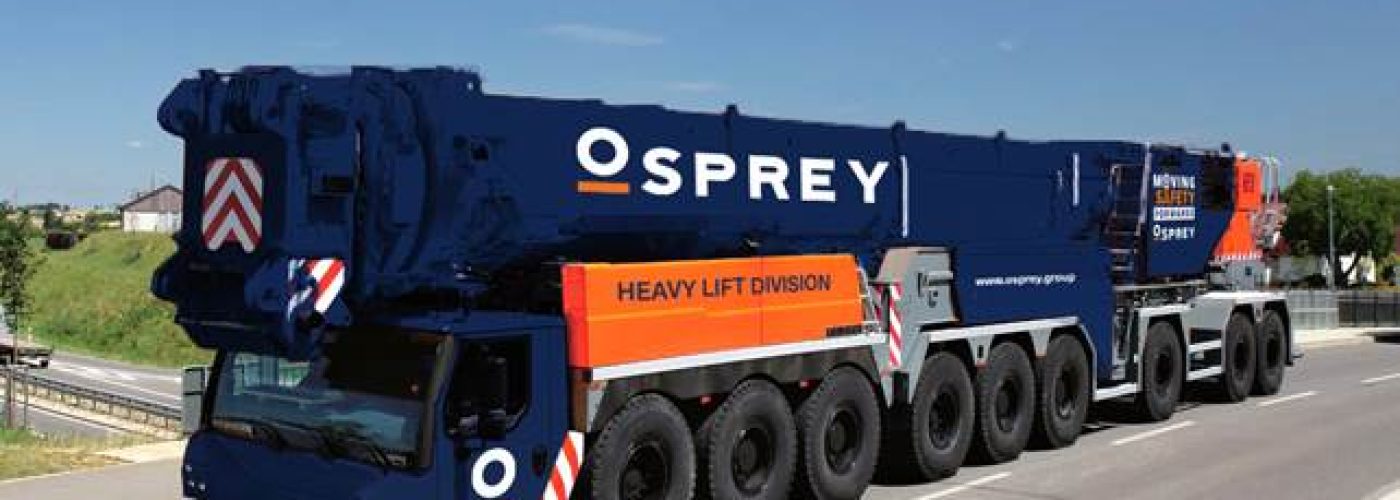Osprey is expanding its heavy-lift fleet with the addition of the Liebherr LTM 1750-9.1, an 800-tonne all-terrain mobile crane arriving in November. This investment increases Osprey’s capability to deliver complex lifting operations for onshore wind, civil infrastructure, bridges, ports, and highways projects.
To date, Osprey has contributed to projects delivering over 5,000 megawatts of clean energy, installing hundreds of onshore wind turbines and handling major offshore components. The company’s heavy-lift experience extends from turbine erection and maintenance to the testing and transport of next-generation nacelles and blades, reinforcing its role in the UK’s transition to low-carbon energy.
Dean Graham, Heavy Lift Director at Osprey, explains: “The LTM 1750-9.1 adds real flexibility to our operations. It’s quick to set up, easy to move, and efficient to run. For clients, that means we can shorten programmes, reduce vehicle movements, and complete lifts in tighter spaces.”
Efficient Set-Up and Mobility
The LTM 1750-9.1 features a 52-metre telescopic boom, a maximum hoist height of 152 metres and a maximum working radius of 116 metres. Its self-rigging design allows it to be ready for work in approximately four to five hours, without the need for a separate rigging crane, depending on the selected configuration.
With nine axles, the crane spreads its load over a larger footprint, reducing ground pressure and allowing access to areas where heavier crawler cranes or eight-axle models might struggle.
“It rigs itself using its own boom and can move between pads while part-rigged,” says Graham. “That makes it well suited to turbine maintenance or construction work where space is limited.”
The crane is supplied with the full complement of components, enabling multiple boom and luffing jib configurations as well as the Y guy system to brace the boom to increase lifting capacity to meet a wide range of heavy lift requirements. This flexibility allows Osprey to optimise the crane setup for each project, maximising lifting capacity, improving efficiency, and ensuring the right configuration is available for every site condition.
Reduced Environmental Impact
The crane is fitted with the latest Euro-compliant engines and is HVO-ready, allowing it to run on renewable fuels. Liebherr’s ECOdrive and ECOmode systems optimise fuel use and lower emissions, supporting Osprey’s goal to make heavy lifting operations cleaner and more efficient.
Improving Onshore Wind Delivery
The new crane is particularly relevant for onshore wind sites, where equipment needs to be both powerful and mobile. The ability to rig quickly and travel between turbines without full de-rigging can save several days per project, helping turbines generate power sooner and reducing local disruption.
“It’s a practical addition to the fleet,” Graham adds. “As sites become more congested and access gets tighter, we need cranes that can do more with less time, less space, and lower ground loadings.”
Osprey has a long history supporting the UK’s renewable energy sector, delivering logistics for offshore wind and tidal power projects both in the UK and internationally. Osprey has transported every major offshore wind farm component, including jackets, monopiles, nacelles, and blades using Osprey-owned cranes, self-propelled modular transporters (SPMTs), and barges.
Civils Construction Sites
With increasingly congested sites and tightly managed delivery schedules, the reduced rigging times of the LTM 1750-9.1 enable Osprey to meet demanding programme requirements and meet tight deadlines. Its ability to self-rig and work within confined areas makes it particularly well suited to urban civil engineering projects, where minimising disruption to the public and surrounding infrastructure is essential.
This addition strengthens Osprey’s existing fleet of heavy mobile and crawler cranes, extending the company’s capability across complex bridge and infrastructure installations. Osprey’s heavy-lift teams are known for engaging early with clients to refine lift plans, reduce risk, and shorten build times.
Osprey has applied the same engineering approach across a wide range of civil infrastructure projects, including the A45 Whitley South Bridge, M1 Kegworth Bypass and M4 Monkey Island Lane The company has also supported Network Rail on several bridge installations and replacements notably at Gipsy Patch Bridge, Penstone Bridge, Warrington Bridge, and Whaley Bridge, where precise heavy-lift coordination and minimal disruption were critical to project success.
Complementary Services: Port Marshalling and Freight Forwarding
The LTM 1750 complements Osprey’s existing offering of heavy mobile and heavy crawler crane fleet, including port marshalling and freight-forwarding operations. At the Port of Blyth, Osprey has delivered over 1,000 heavy lifts, supporting modular construction and offshore wind projects. Using cranes such as the Liebherr LG 1750 and Tadano CC3800, together with modular SPMTs, the company’s teams have managed complex manoeuvres and tight schedules across confined portside environments.
These port operations form part of Osprey’s integrated approach to project delivery, combining heavy-lift engineering, transport planning, and marine logistics. This ensures clients benefit from safer, more efficient operations for large-scale renewable and infrastructure projects.
Building, Design & Construction Magazine | The Choice of Industry Professionals





